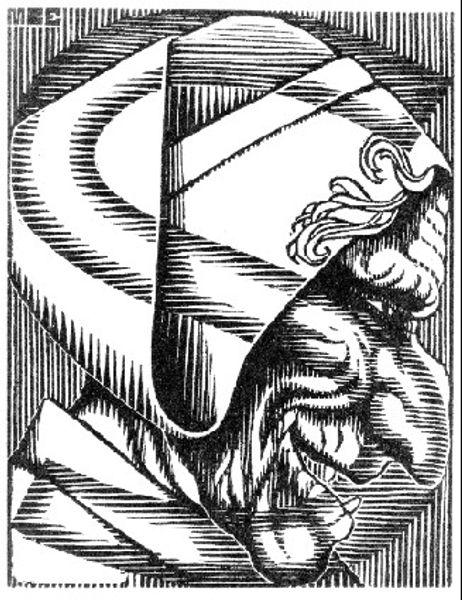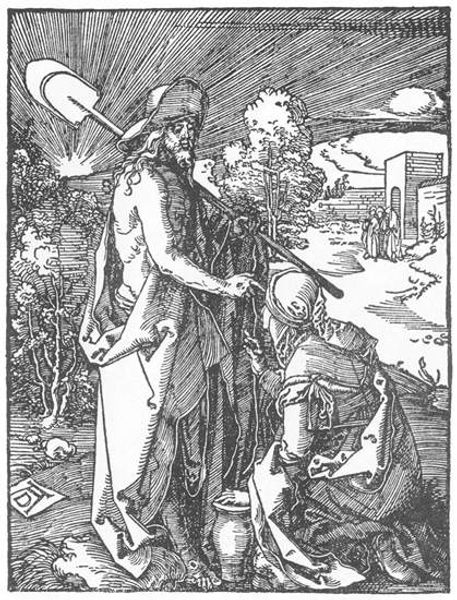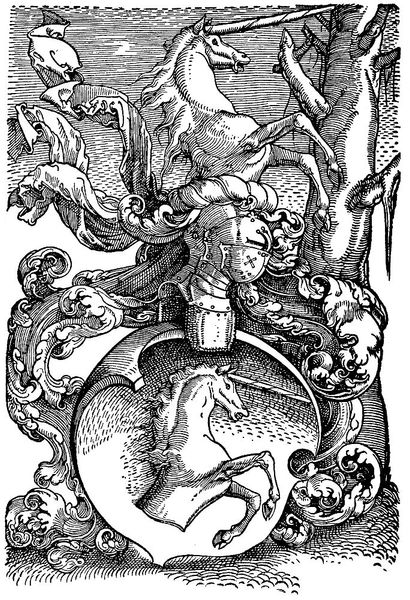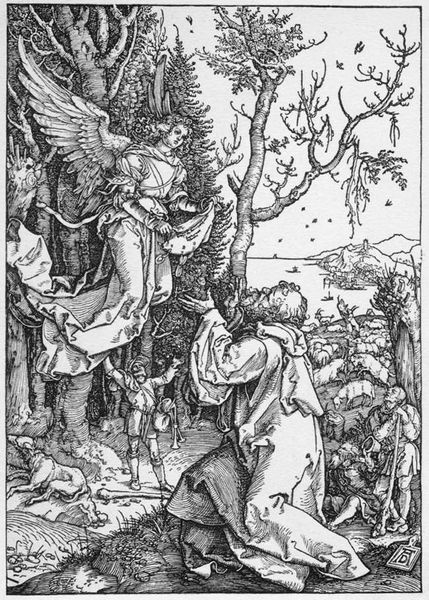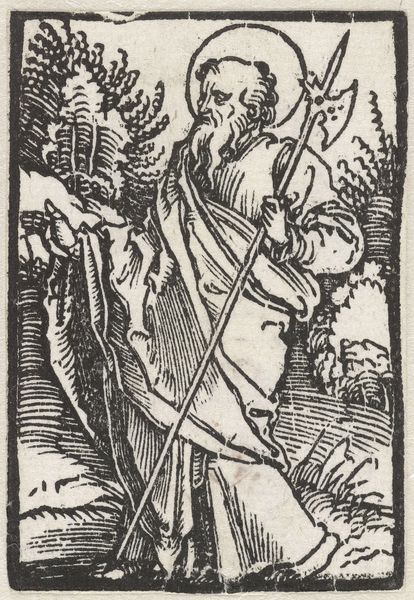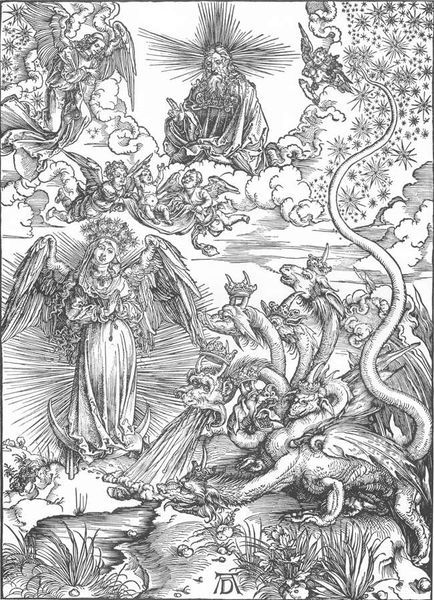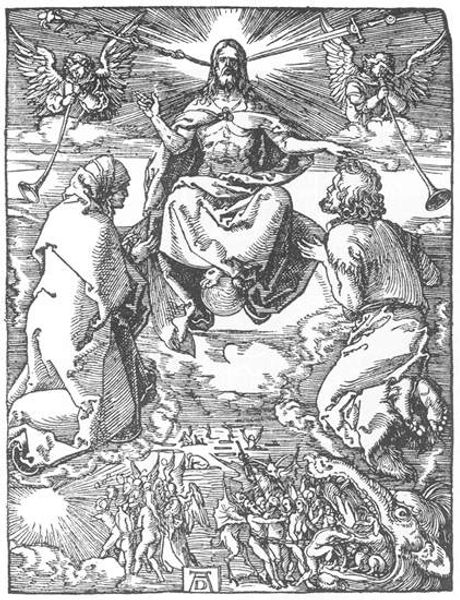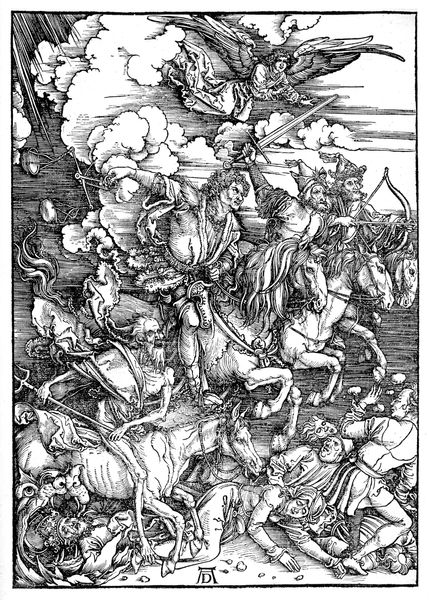
print, woodcut
#
allegories
#
facial expression drawing
#
medieval
#
allegory
#
narrative-art
#
symbol
# print
#
pen illustration
#
death
#
figuration
#
momento-mori
#
woodcut
#
men
#
mythology
#
history-painting
#
northern-renaissance
#
organism
Copyright: Public domain
Editor: This is "Death and the Abbott," a woodcut made in 1538 by Hans Holbein the Younger. It's striking how stark the contrast is between the rigid, almost comical, skeleton figure and the flowing robes of the abbot. It has such a foreboding atmosphere, doesn't it? What can you tell us about how its historical context shapes its message? Curator: Absolutely. Holbein created this during a period of immense social and religious upheaval with the rise of the Reformation. These “Dance of Death” images weren't just about personal mortality; they were potent critiques of the Church and its perceived corruption. Editor: So, the abbot specifically is not a neutral figure? Curator: Exactly. Notice how Death snatches at the abbot's staff and disrupts his reading, symbolized by the prayer book. Consider the Church's role in controlling knowledge and wealth at the time. Holbein, through his art, invites viewers to contemplate the transient nature of earthly power and religious institutions themselves. What's especially interesting to consider is how printmaking allowed such imagery to circulate widely, influencing public opinion. Editor: So, these prints were more than just art objects; they were actually tools for social commentary. That’s so different than how I typically think about art from this period. Curator: Precisely! It begs the question: what kind of cultural work can an image perform? Holbein's woodcuts pushed the boundaries of art's public role. Editor: It is a real challenge to conventional thinking, considering how easily art can become detached from the culture it represents. Thanks for contextualizing it in a social and political landscape. Curator: My pleasure! It is in these contexts that we discover just how influential art can be, not only artistically but also socially.
Comments
No comments
Be the first to comment and join the conversation on the ultimate creative platform.
